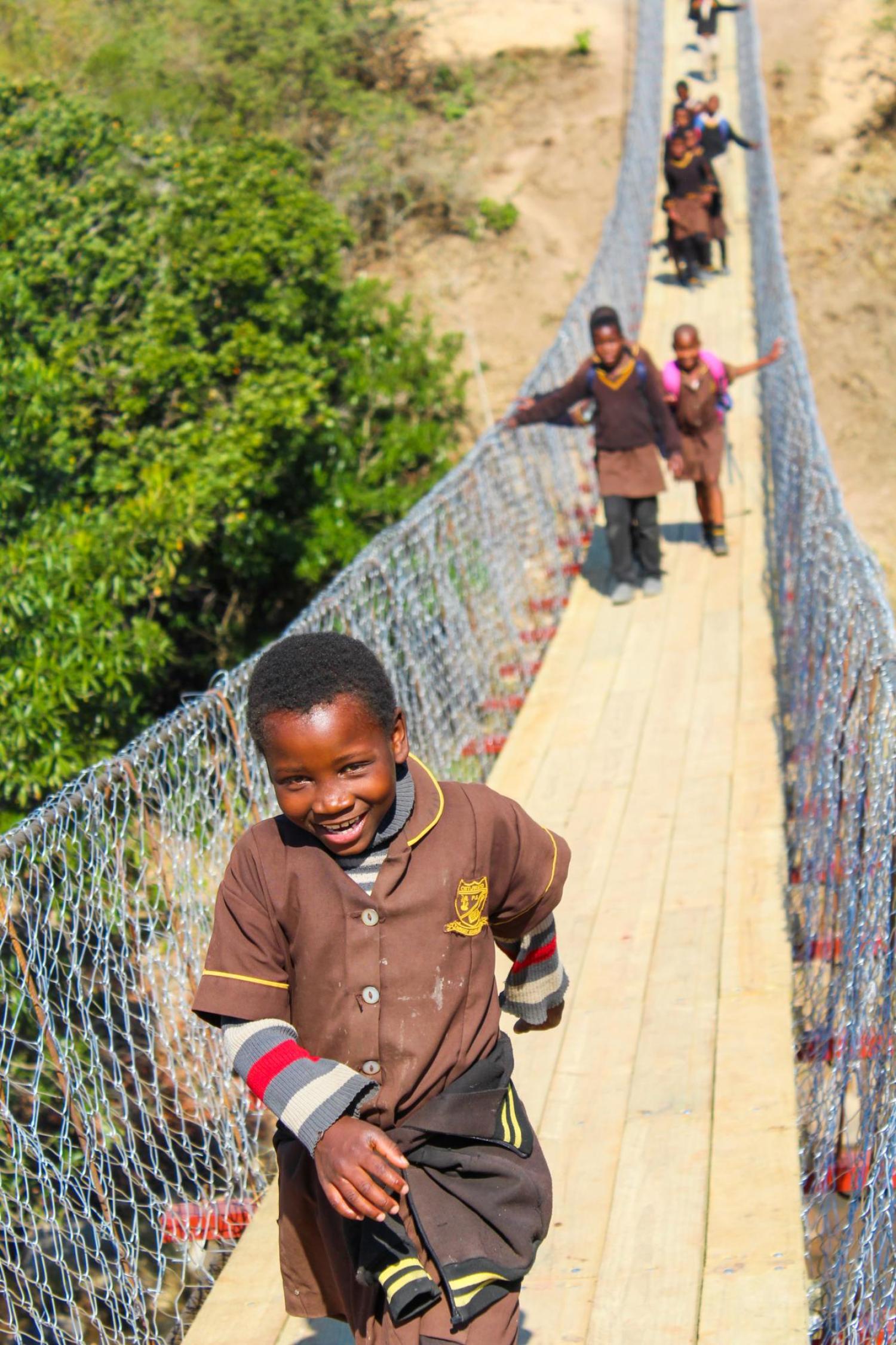Connecting Communities

Engineers in Action bridges poverty and prosperity in Eswatini
Nikki Edwards | Photos Courtesy of Joelle Westcott
In their college careers, sophomores Joelle Westcott and Cyrus Haas never imagined themselves doing construction in Sub-Saharan Africa. Nevertheless, there they were driving nails into a 700 foot bridge with the citizens of Eswatini.
Underdeveloped communities around the world are unable to bridge the gap between poverty and economic growth. Due to isolation and other topographical challenges, communities cannot gain access to sources of education, health care, and economic opportunities. However, Engineers In Action (EIA) are connecting communities with sustainable infrastructures to help remote districts take the first step towards economic prosperity.
EIA is a student-led, club-based chapter program that operates out of 32 universities across the globe and includes countries such as the United States, Canada, and the United Kingdom. With locally-sourced materials and labor, the program has constructed 77 footbridges in 11 rural communities. These bridges connect almost 150,000 isolated people to resources they could not previously access.
The University of Colorado chapter has been operating since 2013 and have built seven footbridges in Bolivia, Eswatini, and Nicaragua. Civil Engineer Joelle Westcott and Chemical Engineer Cyrus Haas were on last year’s travel team in Eswatini. “Engineers in Action has definitely alleviated rural isolation and poverty for the communities. With the footbridges, they now have access to markets, schools, and other resources,” Westcott said.
It is a year-long process to design and implement the bridge into the community. First, the CU chapter prepares an application with a list of countries they would like to help. This year they submitted an application for Eswatini. After receiving their application, Sam Sweet, CU alumni and overseer of EIA in Eswatini, surveyed the different communities the team might help and sent them information about each in a six page survey. “Sam Sweet does all the initial groundwork. He tells us how big the community is, how much impact the bridge will have, what the topography is like and he does some preliminary math to make sure that we can build a bridge there,” Haas said.
Members of EIA attended multiple two hour long seminars that explained all of the physics and math involved with designing the bridge. From there, the students created an Excel spreadsheet to make alterations to the width, length, foundation and other aspects of the footbridge’s design. The final design went through three different review calls to ensure the bridge was as efficient and as safe as possible, and before travelling to Eswatini, members presented a plan of action to prove to their Engineer of Record, Harry McElroy, that the team was ready for the mission.
In the beginning of summer 2019, the CU chapter arrived in Eswatini and began construction with the community. “We’re not coming in and giving them a bridge, we’re coming to collaborate with them and create a bridge,” Westcott said. “One thing I learned through this was the power of people. There were times where we had to dig very deep trenches and construct the foundation of the bridge and I asked myself, ‘how is this all going to get done?’ but with the help of the community we were able to accomplish huge tasks in a short amount of time.”
Through funding from CU, organizations such as Micro Projects (a non-profit that provides materials for construction) and the incredible efforts put forth by CU students and members of the community, the CU chapter has been able to create environmentally sustainable bridges that have vastly improved lives around the world. According to the EIA organization, the bridges constructed by CU and other university chapters have, “increased enrollment in schools, healthcare treatment, fertilizer investment, crop yield, farm profits, labor market income, women in the labor market and economic return on investment.”
Before the bridges are implemented into the community, many civilians face dangerous river crossings and are often cut off from access to essential services during floods. The isolation from markets and education is the source of poverty in many countries and EIA continues to build bridges to give communities year-round safe access to essential resources. “It’s really rewarding to be able to do this for so many communities,” Haas said. “EIA provides students with a real world experience that a lot of people don’t get until after they graduate. You’re not only building a bridge, you’re building long lasting relationships with our team and with the community.”

